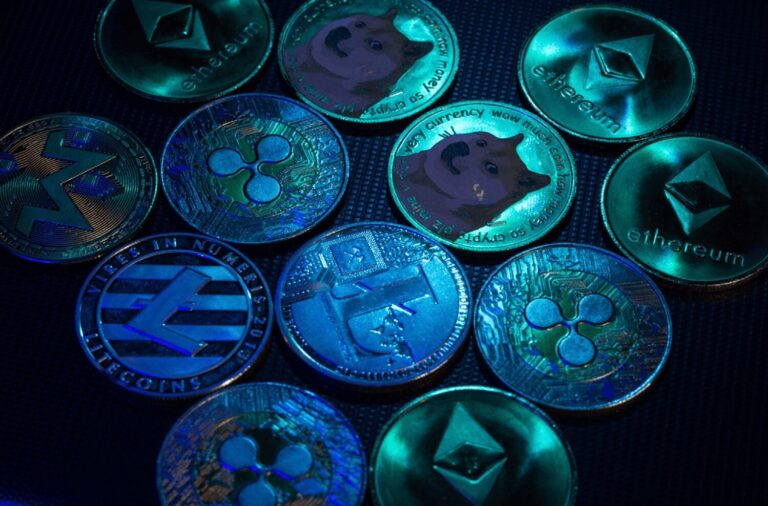
ETH coin
The cost of sending, trading, or interacting with applications on Ethereum has been one of the biggest frustrations for everyday users. At the height of network congestion, simple token swaps can cost anywhere from $20 to over $100 in gas fees. For developers and regular traders, those costs quickly add up.
This is where Layer 2 networks (L2s) come in. They are built on top of Ethereum to scale transactions, making them faster and cheaper while maintaining the security guarantees of the base chain. In 2025, using L2s has become one of the most practical ways for crypto users to avoid expensive gas fees without leaving the Ethereum ecosystem.
This guide walks you through what Layer 2s are, why they matter, and how you can start using them to save money today.
What Are Layer 2 Networks?
Layer 2 networks are scaling solutions that process transactions off the Ethereum mainnet but still rely on its security. Think of Ethereum as the “settlement layer” and Layer 2s as highways built above it.
Some popular types of L2s include:
-
Rollups (Optimistic & ZK-Rollups): Bundle hundreds of transactions together before submitting them to Ethereum.
-
State Channels: Allow multiple transactions between participants without hitting the blockchain each time.
-
Sidechains: Independent blockchains that run in parallel to Ethereum but are connected via bridges.
Well-known L2 networks include Arbitrum, Optimism, zkSync, Base, and StarkNet.
Why Use Layer 2s?
-
Lower Fees: Transactions cost pennies instead of tens of dollars.
-
Faster Transactions: Near-instant confirmations compared to Ethereum’s slower block times.
-
Access to DeFi & NFTs: Most L2s are compatible with popular decentralized apps (dApps).
-
Scalability: More transactions per second (TPS) without clogging Ethereum.
Step-by-Step Guide: How to Use Layer 2 Networks
1. Choose a Layer 2 Network
Pick an L2 that fits your needs:
-
Arbitrum & Optimism → Great for DeFi apps.
-
zkSync & StarkNet → Strong on security and privacy.
-
Base (by Coinbase) → Easy onboarding for new users.
2. Set Up Your Wallet
-
Use a Web3 wallet like MetaMask, Trust Wallet, or Rabby.
-
Add the L2 network manually, or let the dApp prompt you.
-
Example (Arbitrum):
-
Network Name: Arbitrum One
-
RPC:
https://arb1.arbitrum.io/rpc -
Chain ID:
42161
-
-
3. Bridge Your Assets
-
Use an official bridge or aggregator like Hop Protocol, Orbiter Finance, or the native bridge.
-
Example: Moving ETH from Ethereum mainnet to Arbitrum.
-
Always check bridge fees and withdrawal times (some take minutes, others days).
4. Explore dApps on L2
-
Swap tokens with Uniswap, Sushiswap, or Curve on L2.
-
Trade NFTs with OpenSea (supports L2s like Arbitrum and Optimism).
-
Participate in DeFi protocols like Aave or GMX on L2.
5. Withdraw if Needed
-
You can bridge funds back to Ethereum mainnet when necessary.
-
Note: Optimistic rollups often have a 7-day withdrawal period; ZK rollups are usually faster.
Tips for Saving Even More on Gas
-
Use Off-Peak Hours: Fees are lower during weekends or when Ethereum traffic drops.
-
Batch Transactions: If possible, do multiple actions in a single transaction.
-
Track Gas Prices: Use tools like GasNow or Etherscan Gas Tracker to know when fees are cheapest.
-
Choose the Right L2: Some networks are consistently cheaper than others, depending on usage.
Risks & Considerations
-
Bridge Risks: Bridges are often targeted by hackers—always use reputable ones.
-
Smart Contract Risks: L2 protocols are newer and may have vulnerabilities.
-
Withdrawal Delays: Some rollups require long waiting periods for withdrawals.
-
Centralization Concerns: Some L2s still rely on centralized operators for validation.
The Future of Layer 2
Ethereum’s roadmap, especially with upgrades like Danksharding and Proto-Danksharding (EIP-4844), is designed to make L2s even cheaper. By lowering the cost of posting data to Ethereum, fees on rollups could drop to fractions of a cent.
In 2025 and beyond, most everyday Ethereum activity is expected to shift to L2s, making them the default experience for traders, DeFi users, and NFT collectors.
Final Thoughts
Using Layer 2 networks is the most practical way to avoid Ethereum’s high gas fees without giving up its security and ecosystem. By bridging your assets, exploring dApps, and adopting best practices, you can cut costs significantly while still enjoying the full benefits of Web3.
If Ethereum is the settlement hub, then Layer 2s are the fast lanes—and in 2025, they’re where the real activity is happening.


